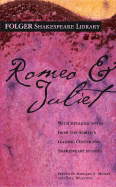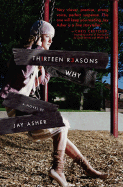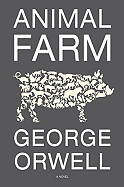Collection Analysis Report
for Supplemental Texts for Grade 9
This report provides data analyses into the titles on this list to help support your efforts to put the right book in each reader's hands.
This report is organized by Collection Analysis by Genre, Cultural, and Curricular Areas, Quantitative Measures, and Qualitative Measures.
Explore all of TeachingBooks
Sign in and enjoy.
Collection Analysis by Genre, Cultural, and Curricular Areas
For the 7 books on this list, please find an analysis revealing the quantity of titles associated with genre, cultural, and curriculum classifications. Additionally, please find the "Not Represented" section where you can click to identify other titles to potentially add to this list.
We hope this collection analysis tool helps you achieve the variety and differentiation of books that you want for your reading opportunities.
(7 of 7 titles have genres, curricular, or cultural experiences.)
- English Language Arts (7 books)
- Social Studies (4 books)
- Poetry (3 books)
- Drama (2 books)
- Health (2 books)
- Realistic Fiction (2 books)
- Biography (1 books)
- Fairy Tales / Folklore (1 books)
- Historical Fiction (1 books)
- History (1 books)
- Humor (1 books)
- Mystery (1 books)
- Nonfiction (1 books)
- Romance (1 books)
- Science Fiction / Fantasy (1 books)
- Spanish (1 books)
Genre, Curricular, and Cultural Experience categories are assigned by TeachingBooks based on professional reviews, authoritative sources, and company guidelines.
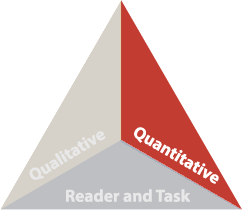 Quantitative Measures
Quantitative Measures
For 6 of 7 titles that have known Lexile levels, below is the low, high, and average Lexile® for the books in this list. We hope these data points, along with the crosswalk to other measures, provide insights into the variety and differentiation of this collection.
Lexile® Average: 765 (Range: 550 - 1130)
Reading Level and Grade Band Crosswalk
| Grade Band | Lexile® | ATOS | Degrees of Reading Power® | Flesch-Kincaid | Fountas & Pinnell | Reading Maturity | SourceRater |
|---|---|---|---|---|---|---|---|
| 2-3 | 420-820 | 2.75-5.14 | 42-54 | 1.98-5.34 | I-P | 3.53-613 | 0.05-2.48 |
| 4-5 | 740-1010 | 4.97-7.03 | 52-60 | 4.51-7.72 | O-V | 5.42-7.92 | 0.84-5.75 |
| 6-8 | 925-1185 | 7.00-9.98 | 57-67 | 6.51-10.34 | U-Z | 7.04-9.57 | 4.11-10.66 |
| 9-10 | 1050-1335 | 9.67-12.01 | 62-72 | 8.32-12.12 | Z+ | 8.41-10.81 | 9.02-13.93 |
Key: Purple highlight represents average.
Source: National Governors Association for Best Practices and Council of Chief State School Officers.[1]
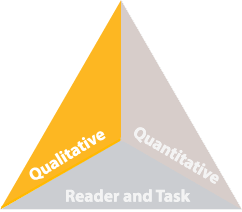 Qualitative Measures (BETA)
Qualitative Measures (BETA)
For 7 of 7 titles that have known qualitative measurements, this graph reveals the aggregated low, high, and average qualitative measures for the books in this list. We hope this range of information shows the variety and differentiation of this collection.
Qualitative Text Complexity Ranges
= low and high range of submitted values = average of submitted values
- Slightly
- Moderately
- Very
- Exceedingly
Qualitative measures for each title are determined by crowd sourced results from professional educators who complete the literary or informational text complexity rubrics. These are relatively new on TeachingBooks so only a small percentage of all the titles have currently been evaluated. Perhaps you can help?
Instructional Materials Summary
Below please find a summary of available multimedia texts and instructional materials that enrich and deepen the discussion of the titles on this list.
- 101 Videos
- 19 Book Readings
- 175 Lesson Plans
- Total of 290 resources
Details for Each Book
Below are the titles on "Supplemental Texts for Grade 9". If you wish to see the curricular areas, genres, Lexile® and Qualitative measures, along with the collection of ready-to-use instructional materials, go online to TeachingBooks at: https://school.teachingbooks.net/QL38J7U
Night
by Elie Wiesel and Marion Wiesel
- Grades Used: 7, 8, 9, 10, 11, 12
- Genres: Biography, Nonfiction
- Cultural Experiences: Jewish
- Curricular Areas: English Language Arts, Health, History
- Lexile: 590
- Year Published: 1986
Qualitative Measures:
- Meaning: Very Complex
- Text Organization: Moderately Complex
- Use of Visual Features: Slightly Complex
- Conventionality: Very Complex
- Vocabulary: Moderately Complex
- Sentence Structure: Moderately Complex
- Subject Matter Knowledge: Very Complex
- Intertextuality: Very Complex
The House on Mango Street
- Grades Used: 4, 5, 6, 7, 8, 9, 10
- Genres: Realistic Fiction
- Cultural Experiences: Latino/a/e/x (Global), Latino (US / Canada)
- Curricular Areas: English Language Arts, Spanish, Social Studies
- Lexile: 870
- Year Published: 1984
Qualitative Measures:
- Meaning: Very Complex
- Text Organization: Very Complex
- Use of Visual Features: Slightly Complex
- Conventionality: Very Complex
- Vocabulary: Moderately Complex
- Sentence Structure: Moderately Complex
- Life Experiences: Moderately Complex
- Cultural Knowledge: Very Complex
Romeo and Juliet
- Grades Used: 8, 9, 10
- Genres: Drama, Historical Fiction, Poetry, Romance
- Curricular Areas: English Language Arts
- Lexile: 560
- Year Published: 1597
Qualitative Measures:
- Meaning: Very Complex
- Text Organization: Very Complex
- Use of Visual Features: Slightly Complex
- Conventionality: Exceedingly Complex
- Vocabulary: Exceedingly Complex
- Sentence Structure: Very Complex
- Life Experiences: Very Complex
- Cultural Knowledge: Exceedingly Complex
The Odyssey
by Homer
- Grades Used: 9, 10, 11
- Genres: Fairy Tales / Folklore, Poetry
- Curricular Areas: English Language Arts, Social Studies
- Lexile: 890
Qualitative Measures:
- Meaning: Very Complex
- Text Organization: Very Complex
- Use of Visual Features: N/A
- Conventionality: Very Complex
- Vocabulary: Very Complex
- Sentence Structure: Very Complex
- Life Experiences: Moderately Complex
- Cultural Knowledge: Exceedingly Complex
Thirteen Reasons Why
by Jay Asher
- Grades Used: 7, 8, 9, 10, 11, 12
- Genres: Mystery, Realistic Fiction
- Curricular Areas: English Language Arts, Health, Social Studies
- Lexile: 550
- Year Published: 2007
Qualitative Measures:
- Meaning: Slightly Complex
- Text Organization: Moderately Complex
- Use of Visual Features: Slightly Complex
- Conventionality: Slightly Complex
- Vocabulary: Moderately Complex
- Sentence Structure: Moderately Complex
- Life Experiences: Moderately Complex
- Cultural Knowledge: Moderately Complex
A Midsummer Night's Dream
- Grades Used: 8, 9, 10, 11, 12
- Genres: Drama, Humor, Poetry, Science Fiction / Fantasy
- Curricular Areas: English Language Arts
- Lexile: Unknown
- Year Published: 1596
Qualitative Measures:
- Meaning: Very Complex
- Text Organization: Very Complex
- Use of Visual Features: N/A
- Conventionality: Exceedingly Complex
- Vocabulary: Exceedingly Complex
- Sentence Structure: Exceedingly Complex
- Life Experiences: Very Complex
- Cultural Knowledge: Exceedingly Complex
Animal Farm
- Grades Used: 6, 7, 8, 9, 10, 11, 12
- Curricular Areas: English Language Arts, Social Studies
- Lexile: 1130
- Year Published: 1945
Qualitative Measures:
- Meaning: Very Complex
- Text Organization: Very Complex
- Use of Visual Features: N/A
- Conventionality: Very Complex
- Vocabulary: Moderately Complex
- Sentence Structure: Moderately Complex
- Life Experiences: Very Complex
- Cultural Knowledge: Very Complex
Explore all of TeachingBooks
Sign in and enjoy.



